Environment
The environment refers to the surroundings in which an organism operates, including air, water, land, natural resources, flora, and fauna. It encompasses both living (biotic) and non-living (abiotic) components.
Types of Environments
- Natural Environment: Includes forests, oceans, rivers, mountains, deserts, and other natural landscapes.
- Artificial Environment: Created or modified by humans, such as cities, buildings, and cultivated farmlands.
Components of the Environment
- Biotic Factors: Living organisms, including plants, animals, and microorganisms.
- Abiotic Factors: Non-living components, such as air, water, soil, sunlight, and climate.
Environmental Factors
Several factors influence the environment, including:
- Climate: The average weather conditions in a specific area, including temperature, humidity, precipitation, and wind patterns.
- Pollution: The introduction of harmful substances or contaminants into the environment, which can have detrimental effects on living organisms.
- Biodiversity: The variety of living organisms in a given area, which is crucial for the stability and sustainability of ecosystems.
- Conservation: Efforts to protect and preserve natural resources and ecosystems for future generations.
Impact of Human Activities
Human activities, such as deforestation, industrialization, and pollution, have significantly impacted the environment, leading to issues like habitat destruction, global warming, and loss of biodiversity.
Study Guide
To understand the environment better, consider the following study topics:
- Ecological Relationships: Explore the interactions between different organisms and their environment.
- Environmental Conservation: Learn about the importance of preserving natural resources and reducing human impact on the environment.
- Climate Change: Investigate the causes and consequences of global warming and its effects on the environment.
- Biodiversity: Understand the significance of diverse ecosystems and the need for conservation efforts.
- Pollution Control: Examine the sources of pollution and strategies for mitigating its impact on the environment.
◂Science Worksheets and Study Guides Fifth Grade. The 6-Kingdoms of life
Study Guide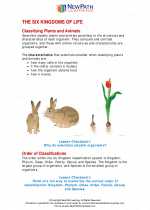 The 6-Kingdoms of life
The 6-Kingdoms of life  Activity Lesson
Activity Lesson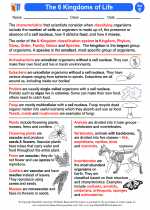 Kingdoms
Kingdoms  Worksheet/Answer key
Worksheet/Answer key The 6-Kingdoms of life
The 6-Kingdoms of life  Worksheet/Answer key
Worksheet/Answer key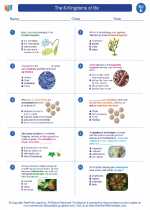 The 6-Kingdoms of life
The 6-Kingdoms of life  Worksheet/Answer key
Worksheet/Answer key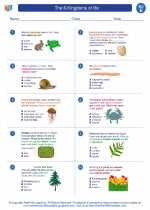 The 6-Kingdoms of life
The 6-Kingdoms of life  Worksheet/Answer key
Worksheet/Answer key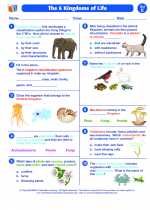 The 6-Kingdoms of life
The 6-Kingdoms of life  Vocabulary/Answer key
Vocabulary/Answer key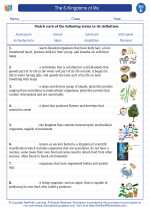 The 6-Kingdoms of life
The 6-Kingdoms of life  Vocabulary/Answer key
Vocabulary/Answer key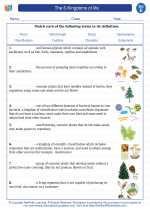 The 6-Kingdoms of life
The 6-Kingdoms of life  Vocabulary/Answer key
Vocabulary/Answer key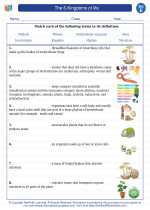 The 6-Kingdoms of life
The 6-Kingdoms of life  Vocabulary/Answer key
Vocabulary/Answer key The 6-Kingdoms of life
The 6-Kingdoms of life 

 Activity Lesson
Activity Lesson
 Worksheet/Answer key
Worksheet/Answer key
 Worksheet/Answer key
Worksheet/Answer key
 Worksheet/Answer key
Worksheet/Answer key
 Worksheet/Answer key
Worksheet/Answer key
 Vocabulary/Answer key
Vocabulary/Answer key
 Vocabulary/Answer key
Vocabulary/Answer key
 Vocabulary/Answer key
Vocabulary/Answer key
 Vocabulary/Answer key
Vocabulary/Answer key

The resources above cover the following skills:
Concepts of Life Science (SC1, SC2, SC3)
The student demonstrates an understanding of the structure, function, behavior, development, life cycles, and diversity of living organisms by identifying and sorting animals into groups using basic external and internal features.